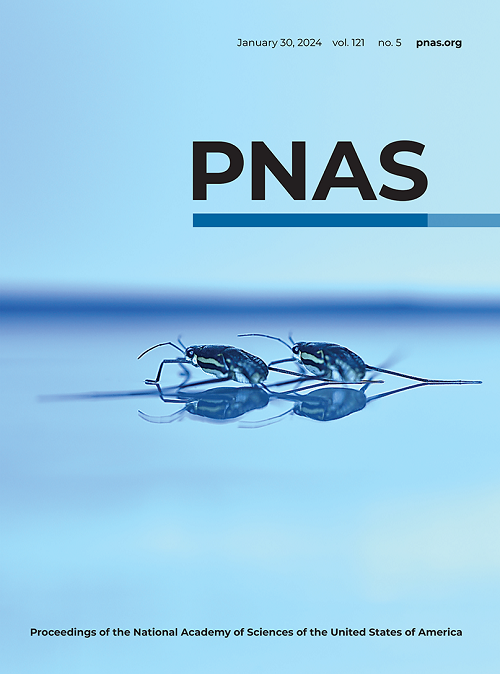界面效应决定了化学驱动流体中的非平衡相行为
IF 9.1
1区 综合性期刊
Q1 MULTIDISCIPLINARY SCIENCES
Proceedings of the National Academy of Sciences of the United States of America
Pub Date : 2025-07-23
DOI:10.1073/pnas.2501145122
引用次数: 0
摘要
化学燃料消耗和相分离之间的耦合会导致非平衡稳态的冷凝,从而导致平衡热力学无法描述的相行为。这种“化学驱动流体”的理论模型通常在小长度尺度上调用近平衡近似。然而,由于耗散是由分子尺度化学反应和中尺度扩散输运引起的,因此尚不清楚相分离反应-扩散系统的哪些性质可以假设处于有效平衡状态。在这里,我们使用微观模拟来表明介观通量依赖于相分离界面的非平衡波动。我们进一步发展了第一性原理理论来预测非平衡共存曲线、相分离界面附近介观通量的局部化以及与模拟结果非常吻合的液滴尺寸尺度关系。我们的发现强调了界面性质在控制非平衡冷凝中的核心作用,并对化学驱动流体中的液滴成核、粗化和尺寸控制具有广泛的意义。本文章由计算机程序翻译,如有差异,请以英文原文为准。
Interfacial effects determine nonequilibrium phase behaviors in chemically driven fluids
Coupling between chemical fuel consumption and phase separation can lead to condensation at a nonequilibrium steady state, resulting in phase behaviors that are not described by equilibrium thermodynamics. Theoretical models of such “chemically driven fluids” typically invoke near-equilibrium approximations at small length scales. However, because dissipation occurs due to both molecular-scale chemical reactions and mesoscale diffusive transport, it has remained unclear which properties of phase-separated reaction–diffusion systems can be assumed to be at an effective equilibrium. Here, we use microscopic simulations to show that mesoscopic fluxes are dependent on nonequilibrium fluctuations at phase-separated interfaces. We further develop a first-principles theory to predict nonequilibrium coexistence curves, localization of mesoscopic fluxes near phase-separated interfaces, and droplet size-scaling relations in good agreement with simulations. Our findings highlight the central role of interfacial properties in governing nonequilibrium condensation and have broad implications for droplet nucleation, coarsening, and size control in chemically driven fluids.
求助全文
通过发布文献求助,成功后即可免费获取论文全文。
去求助
来源期刊
CiteScore
19.00
自引率
0.90%
发文量
3575
审稿时长
2.5 months
期刊介绍:
The Proceedings of the National Academy of Sciences (PNAS), a peer-reviewed journal of the National Academy of Sciences (NAS), serves as an authoritative source for high-impact, original research across the biological, physical, and social sciences. With a global scope, the journal welcomes submissions from researchers worldwide, making it an inclusive platform for advancing scientific knowledge.

 求助内容:
求助内容: 应助结果提醒方式:
应助结果提醒方式:


